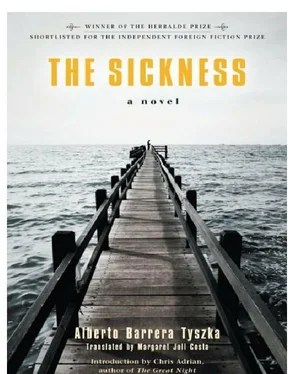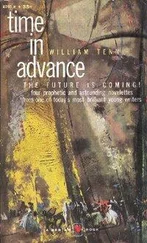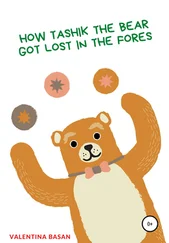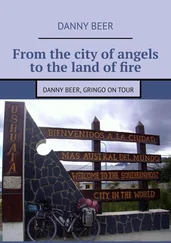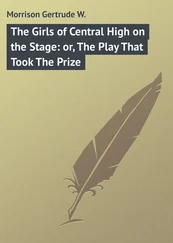He still remembers how the time he spent working in hospitals was always the most tiresome part of the whole course. Understanding how bodies work was still his passion, but doing something to a living body, interfering in another’s breathing, intervening in another’s blood, invading another’s flesh, was not an important part of his vocation. He never rejected the experience, but he probably never enjoyed it either. The idea of knowing that he was before, on, or in a living body slightly inhibited his own motivation, his own skill. It wasn’t the bodies that intimidated him, but knowing that he had a definite responsibility toward them. Perhaps that’s why he felt more comfortable with corpses.
In his university days, corpses were divided into two groups: the mummies and the freshers. The names said everything. The stiffs, which had been used before, belonged to the first group; the newly dead to the second category. No one liked working with the mummies. It was like being with a dummy, it always felt slightly unreal. The mummy was like an old vinyl record that has become more and more chipped over time. A mummy might have a couple of toes missing from its right foot. Once, some joker stubbed out a cigarette on the cheek of a dead boy. That kind of thing happened with the mummies. Any sessions with them gave rise to laughter, childish jokes, distance. The freshers, on the other hand, provoked, at least initially, silence and a strange intimacy.
For Andrés, corpses were an ideal middle path, halfway between books and the emergency operation. They weren’t the mere illustration of a text; they had volume, presence, they were real bodies and yet, at the same time, not entirely real, not the whole truth: they lacked warmth, feeling, urgency. It was precisely in that unreal reality that Andrés found his place. So much so that, more than once, he had wondered if his destiny didn’t lie in performing autopsies; he felt almost condemned to the field of diagnosing lifeless bodies, in which the only signs are the past, in which nothing beats and everything is merely mark or trace. For a long time, he felt his vocation was closer to producing “damage reports” than to “the saving of lives.” He belonged to the group or league who always arrive when there’s nothing to be done, when all that’s needed is a signature on the final balance sheet.
As he progressed in his career, it became clearer to him that in his professional life he was more suited to research or teaching. The prospect of dealing with patients on a daily basis, as part of his work routine, became less and less attractive. It implied a risk he wasn’t sure he wanted to run — making a mistake. Making a mistake in a laboratory was quite different from doing so in an operating room. At the time, Andrés began to fall under the spell of the famous Flemish doctor, Andreas Vesalius. He shared with him not only a first name, but a passion for study, a fascination with how the human body works. From him he also learned that curiosity is a high-risk occupation and that peering in at the enigmas of medicine can prove fatal.
Andreas Vesalius was born in Brussels in 1514. He was a brilliant man and considered to be the founder of modern anatomy. He studied in Paris, taught at Leuven, became a professor at Bologna University, and ended up working as a doctor in the imperial court of Charles V. In 1543, he published his work De humani corporis fabrica libri septem , a groundbreaking study of the structure of the human body that openly questioned Galen’s theories. The book was illustrated with more than three hundred engravings that showed human anatomy as it had never been shown before in the history of civilization. From early on, Vesalius had made his mark on history. He would probably have gone on to do much more, but his life was touched by tragedy: in 1561, in Madrid, the court of the Holy Inquisition sentenced him to death.
Vesalius honed his talents largely on the work he did on dissecting corpses. He had also been given the necessary permissions and blessings to carry out this work. As far as one can ascertain, one fateful day, a body betrayed science: Vesalius opened up a dead man who wasn’t dead. Beneath the skin, beneath the thorax, a heart was still beating. Very feebly perhaps. Perhaps the last flicker of a life about to be extinguished. There was nothing to be done. But in that moment, science became a sin. Some studies say that the body belonged to a nobleman close to the throne, which seems unlikely, but what is known is that Philip II spoke up for Vesalius before the Inquisition and saved his life. One legend has it that the doctor was dressed in sackcloth and sandals and, to pay for his error, was condemned to wander the desert for the rest of his life. Another version of the story has the same tragic tone: Andreas Vesalius paid for his guilt by making a long pilgrimage to the Holy Land. On the way back from Jerusalem, the ship in which he was traveling was wrecked in strange circumstances, taking Vesalius down with it. Thus he paid for his curiosity: either devoured by the desert or by the sea. Drowned in the void.
“Don’t succumb to Vesalius Syndrome,” Professor Armando Coll often said to them. “Don’t let that paralyze you.”
One afternoon, after class, he went for a drink with his students in a small, insalubrious restaurant called La Estrella China. It was near the university and the students went there because the booze was cheap enough for them to get drunk without spending the whole of their allowance. Professor Coll ordered a whisky. After two hours, and feeling less sober and in a more confiding mood, he confessed that he himself was a hostage to Vesalius Syndrome. That’s what he called it. He found the story terrifying. He couldn’t understand how humanity could have punished one of its most outstanding geniuses like that. “Vesalius was almost another Da Vinci,” he said. Andrés Miranda drank in every word, full of surprise and admiration. Before taking his leave, Professor Coll looked at them with a kind of melancholy pity.
“All it proves,” he said, “is that the birth of medicine is irremediably bound up with the birth of negligence. They are two inseparable practices, living side by side. Prepare yourselves.”
At first, she counted them one by one: she got as far as nine. She could stand it no longer. Ever since the morning of that brief and terrible letter in which Ernesto Durán begged for help, nine days had passed and she had done nothing. There was nothing she could do. She couldn’t phone Durán, nor could she tell Dr. Miranda what had happened. She’d been left locked up alone with her anxiety. Then more days passed; she didn’t count them this time, but there were a lot. Too many. Ernesto Durán never wrote again. Nor did he phone. Each morning, though, she repeated the same ritual and rather longingly looked for a letter from him in Dr. Miranda’s inbox. Nothing. The last she’d heard from him was that brief message, that cry for help, giving his phone number. Sometimes she’s assailed by the image of that e-mail and then she can see Ernesto Durán lying on his bed, very pale, mouth half-open, his breathing labored. He hasn’t shaved for days. He looks feebly upward, as if his eyes barely had the strength to see as far as the ceiling. The bed is filthy. There are pools of vomit. The image is filled with the stench of shit and urine. She’s also imagined him lying on the floor of his apartment, as if he’d managed to drag himself a few yards before fainting. He’s naked. He’s been dead for two days. His skin is turning dark, almost violet in color. His mouth is open. An insect buzzes and dances, like a tiny vulture, over the awful stillness of his corpse.
Ernesto has slipped into her nights as well. At two in the morning, Karina starts fearfully awake: in her dream world, Ernesto Durán is holding a knife with which he’s cutting his femoral artery. The blood spurts out and spatters the whole dream.
Читать дальше
